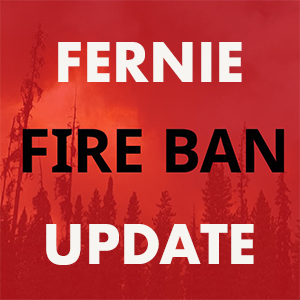The 11 meters of snowfall that Fernie has received this season has created excellent recreation however winter driving conditions have been less than adequate on several occasions. The winter season was full of violent and sometimes deadly crashes and the government has announced new funding in an attempt to make our roads safer.
The Ministry of Transportation and Infrastructure reports that after “an intense winter” it is undertaking several improvements to make the highways safer and more reliable during winter months.

“I have heard from people and communities throughout the province that we need to take action to improve safety on our highways,” said Claire Trevena, Transportation Minister (pictured above). “With that in mind, our government is moving quickly to implement changes that will ensure people are able to get where they need to go more safely through the winter months.”
This winter season Kootenay Pass had the highest-ever recorded snowfall of 1,012 centimetres from Oct. 1, 2017 to the end of February 2018 – 148 per cent higher than the 10-year average.

Related – Mainroad: The time to act is overdue
The ministry is moving on a number of measures, including:
Stricter commercial vehicle chain-up requirements, including higher fines for commercial vehicles not carrying chains, or not chaining up when required. Currently, the fine is $121. The exact fine amounts are yet to be determined. Other North American jurisdictions have fines up to $1,200 for similar violations.
A pilot program to restrict commercial vehicles from using the far left lane on key three-lane highway sections in the winter, to ensure routes remain open to snow plows, emergency vehicles and passenger vehicles.
Investing $1.8 million over the next three years in additional weather stations and overhead message signs to provide better real-time weather and road condition information.
Enhanced road-maintenance contractor monitoring and auditing, leveraging new tools and technology, like road weather stations, variable speed limit systems, and GPS tracking of snow plows. Ministry staff will expand contractor monitoring and auditing, including 24/7 compliance checks during winter storms. New tools and technology will enhance this oversight, including the use of GPS tracking of snow plows.
Extending winter tire and chain regulations on select highways, including mountain passes and rural routes in high snowfall areas, from Oct. 1 to April 30 (instead of March 31), to account for early-spring snowfall.
More support for the Winter Driving Safety Alliance through a specific winter driving campaign, to promote safe winter driving behaviour and awareness for all drivers.
The ministry also states that it will be engaging publicly with the commercial trucking industry, and other stakeholders, in the coming months on the implementation of the new safety measures, with required regulatory changes expected to be in place by next winter.
Winter facts:
The ministry’s maintenance contractors maintain nearly 47,000 kilometres of road and 2,800 bridges in some of the most challenging terrain in Canada.
Crews apply 750,000 tonnes of winter abrasives over 1.2-million kilometres and 100,000 tonnes of salt to highways throughout B.C.
Highway maintenance contract changes:
– B.C.’s highway maintenance program is broken down into 28 service areas.
26 of the 28 service areas are up for contract renewal in 2018-19, through an open bidding process.
– The new contract will require a more proactive approach to highway maintenance around winter weather events.
The biggest improvements over the last contract are:
– On Class A highways, a return to bare pavement within 24 hours of a winter weather event ending (old standard was 48 hours) at temperatures warmer than -9 C, when de-icing chemical use is effective.
– An increase in patrol frequency to 90 minutes on a Class A highway like the Coquihalla during a winter storm (old standard was four hours).
– When a weather event is forecasted to occur, an increase in patrol frequency to four hours in anticipation of the weather event coming (old standard was 24 hours)
– A contractor requirement to use remote weather information systems to forecast when a weather event will occur, and to spread anti-icing chemicals prior to the weather event.
– A 9.5 millimetre abrasive size (old standard was 12.5 millimetres) to reduce potential windshield damage.
– Service Area 11 in East Kootenay was the first to sign this new contract in fall 2016.
See more here from the Winter Driving Safety Alliance and the annual Shift Into Winter campaign.
























